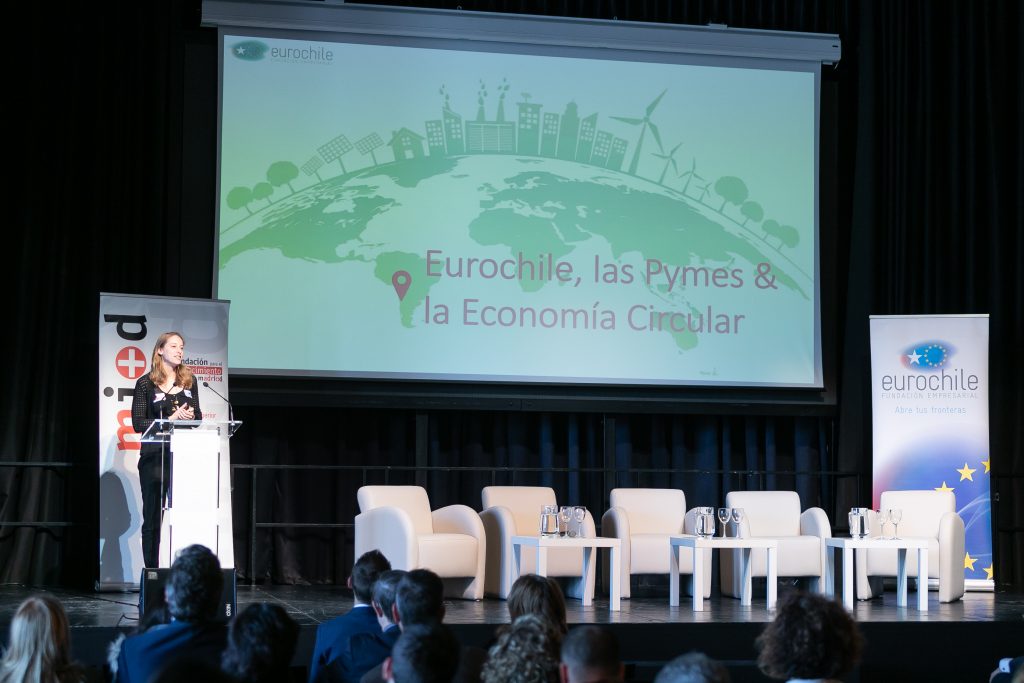The Circular Economy as a tool for a sustainable future
In recent years, the devastating effects that exploitation and overconsumption have had on the environment and the global economy have been highlighted. For this reason, Linnet Solway, a French expert, tells us about the benefits of the Circular Economy for a more sustainable way of life.

The production and consumption of natural resources has increased significantly over the last 50 years, mainly due to improved quality of life and population growth. Production and consumption patterns in today’s society are based on the traditional linear economy model, where raw materials are extracted, then transformed into products for different uses until they are finally discarded as waste, without taking into account the environmental footprint and its consequences.
The linear economy is a completely unsustainable model in a finite world of limited resources and is largely responsible for climate change, biodiversity loss and resource depletion. In contrast, the circular economy is a model of production and consumption that involves reusing, repairing, renewing and recycling existing materials and products as often as necessary to create added value. In this way, the life cycle of products is extended.
In this regard, the European Union presented an action plan for the Circular Economy in 2020, which aims to create more sustainable products, reduce waste and empower citizens to move towards a carbon neutral, sustainable and circular economy by 2050. In this respect, the European Commission has been tasked with implementing these measures to accelerate the transition to a circular economy.
In relation to this, Linnet Solway, a French Circular Economy expert, was interviewed and gave an insight into how the different action plans that the EU has implemented in the last period to be one of the world leaders in Circular Economy are being carried out.
In that sense, Linnet mentions that action plans in Europe will change depending on where one is located, as there is a difference between Eastern and Western Europe, since some countries have a higher economic income than the rest, so they can manage projects more efficiently, while others are much more backward because their current realities can be affected by political, economic and social problems, causing them not to be able to keep up with the legislation implemented by the European Commission.
On the other hand, product consumption is one of the second most important factors affecting the carbon footprint, with 55% coming from energy sources and 45% from the use and consumption of materials. The European Commission is trying to make changes, such as empowering consumers through strategies for responsible and green consumption, where they can repair and remanufacture their products without having to throw them away, so it is expected that companies will have to change their strategies and provide physical and digital tools to carry out this process.
Related to that, there is also the implementation of secondary raw materials, a process that involves processors in reducing, repairing and remanufacturing various discarded products, giving them a second useful life.
In this sense, the European expert states that, “there are various techniques for recycling materials, but if there is no company willing to buy this secondary raw material and add it to its products, there is no point in carrying out this process, which is why it is very important to break the loop of the linear economy. To do this, the raw material has to be brought back to the market, at an attractive price, so that demand for it can increase.
However, a large percentage of European companies have been implementing this circular economy model for years, so, at present, there are indicators that measure the functionality of this model for each individual, but the effectiveness of this monitoring must be taken into account, for this reason, Linnet, details that, “it is complex to define indicators that are for everyone, because it is difficult to compare the implementations that a company has with those of an individual. In terms of Circular Economy indicators, what is really useful for a company is to implement a baseline and compare itself“.
However, by bringing the circular model to Chile, there is a small percentage of companies that have implemented it, so it is expected that in the near future there will be an increase in the use of the Circular Economy, in that sense, the European expert, argues that, “Chile is doing well, at least there is a real intention and a boost from the central and regional government, also, Corfo helps with funds to encourage medium and large companies towards a Circular Economy. In that sense, it is already in the minds of companies and people“.
Ultimately, caring for the environment is a shared responsibility and it is necessary to recognise that our daily actions directly affect the planet’s natural resources and biodiversity. We must therefore take concrete steps to protect the environment and combat climate change.
That said, this transformation towards a circular economy has a positive impact on the environment, as it helps to reduce waste production, pollution, energy and material consumption. In addition, it creates opportunities for job creation and the development of new technologies.
